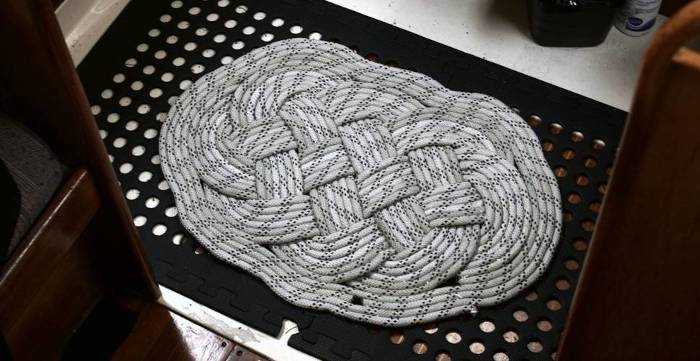
One of the best ways to make use of old rope is to work up a set of rope mats. I made this mat using a 12 mm (1/2") old 35-meter (115 ft) main halyard, making a 6-pass Napoleon knot with a Flemish coil around it. The ropes were stitched together in the end so the mat would keep its shape.
Template
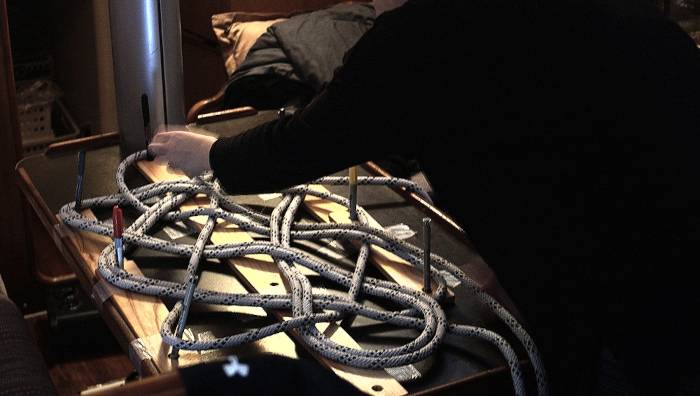
Making a template will make the process easy. I made one using objects I had in the boat, as I wanted to take it apart and re-use it in other projects afterwards. In tutorials I've seen, people draw the pattern (which shows how ropes overlap) on a wooden board, and plant 8 nails, 1 at each end with the other 3 lined up on either side, forming a diamond shape. Nails are represented by black dots:
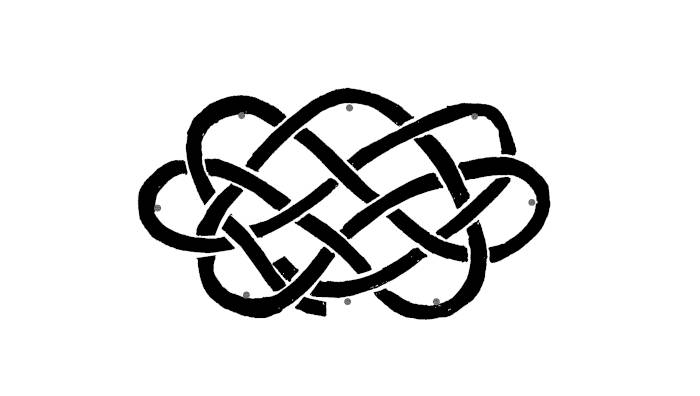
The nails (or pens, in my case) help keep a good shape as you are passing lines over and under. With experience, you won't need a a template (I don't use one anymore), but it is useful for beginners.
Starting the mat
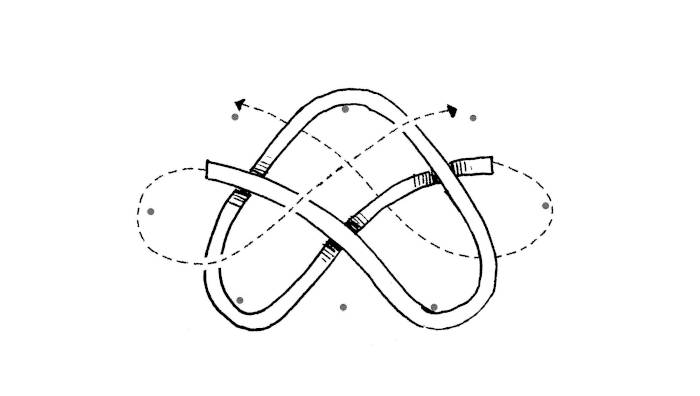
Take a bight at 10 m (35 ft) of your 35 meter (115 ft) rope (~1/3 of your rope), and set up the knot as shown in the diagram above. Lay it loose, with 3 of the bights laying over a nail (the inside of the bight in contact with the nail).
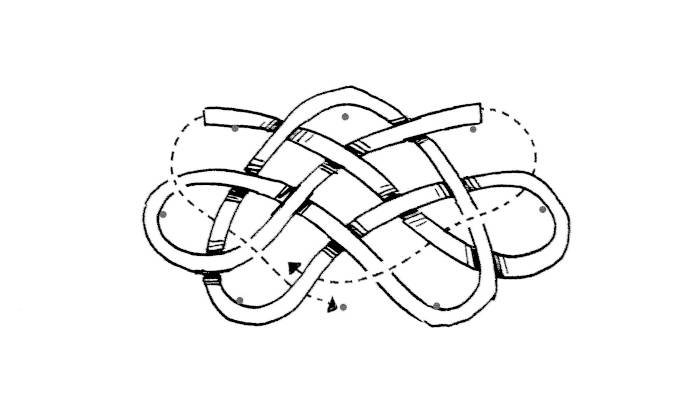
Continue to run the line, as shown in the above diagram.
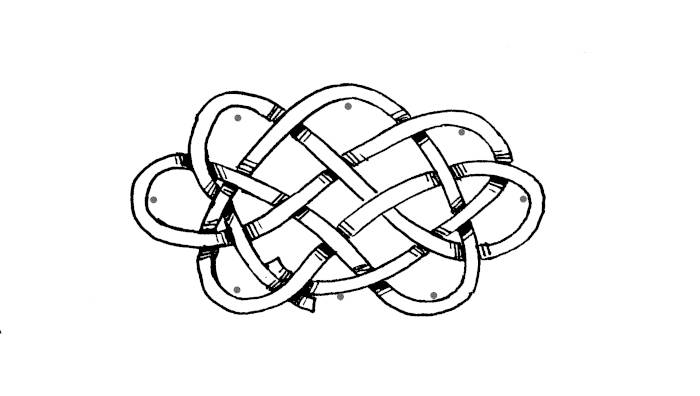
Continue yet again to run the line through, making sure that the ropes overlap in the right places. And voila, your pattern should match the one on the above diagram. You have completed your starting pattern.
Doubling the ropes
This part is easier. It consists of doubling the lines, and only requires that you follow the pattern.
To begin, take the long end, and pass it alongside the short end, all through the pattern until you arrive at the starting point. Now your rope will be doubled. At this point, remove the nails. Continue through the pattern again until you reach the starting point, this will make 3-passes. If you want, you can continue on to making more passes (this will result in a bigger mat). If you have 3 passes, the mat will be small, but you can enlargen it by adding a Flemish coil around it, using the last of your rope.
If you stop at 3-passes, you'll notice that the mat is very loose. Take a bight anywhere and start picking up the slack, working in both directions through the mat. This part takes a long time, especially if your mat is bigger. When the mat has a nice tight shape, and an even number of passes, cut off the surplus rope. Optionally, you can continue to feed the rope until it's all used up, but you may end up areas that have more passes than others. I don't mind this, but it may bother perfectionists. At the bottom of this page, the red mat is a good example of a mat with an uneven number of passes. The other two (black and white ones) are even. I like to use up all of the rope to avoid waste.
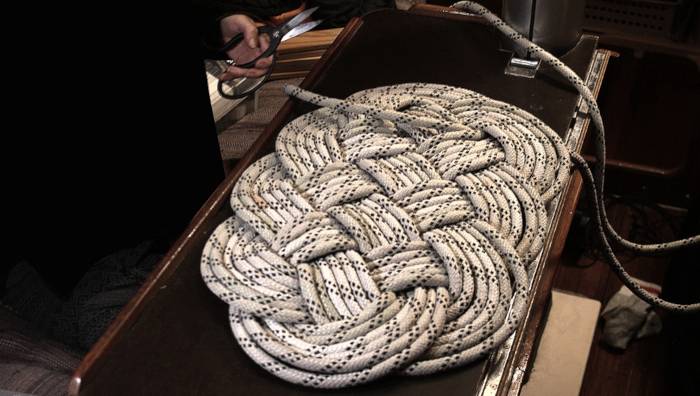
Flemish coil
Coil the cut rope around the mat. For the mat I made, because I used 6 passes, I made 4 coils around the mat in the center. If you make 3 passes, you'll have a lot more rope left over, and you can make a mat that is 9 coils wide.
It is necessary to add stitching to hold the mat together. Thread a large sail needle with marline, and sew through each rope in the coil from the knot to the outer edge radially, then along the edge and back through the coil again to the knot. Do this for the entire mat. Since my coils are 6 rope wide, I also stitched them together in the same manner, otherwise they have a tendency to overlap.
Your mat will be bumpy initially, because of the overlapping ropes, but will flatten out over time. If you're in a hurry to get it flat, use a mallet.
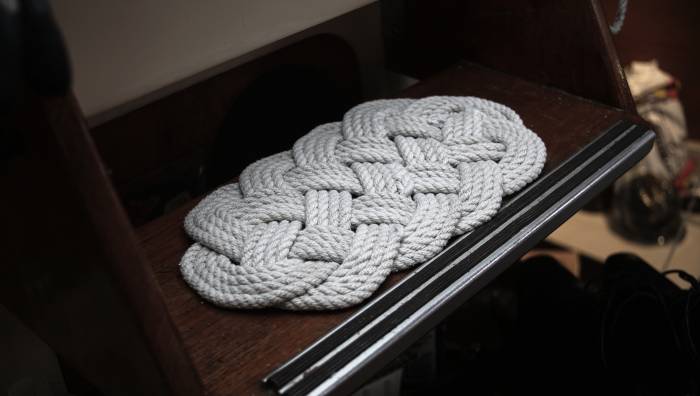
I made the red mat with parts of a damaged halyard. Devine & I would wipe our shoes on it before stepping onto pino. Unfortunately, I forgot this mat on the dock while visiting a marina in North Saanich. When I went back it was gone, seems like someone else adopted it.
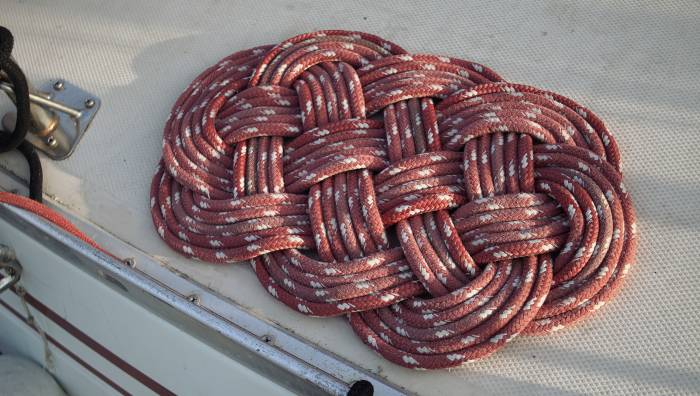
I made the blue mat with parts of yet another damaged halyard (a friend gave us a bunch of rope bits to play with). I gave this mat to our good friends Rik and Kay for their boat.
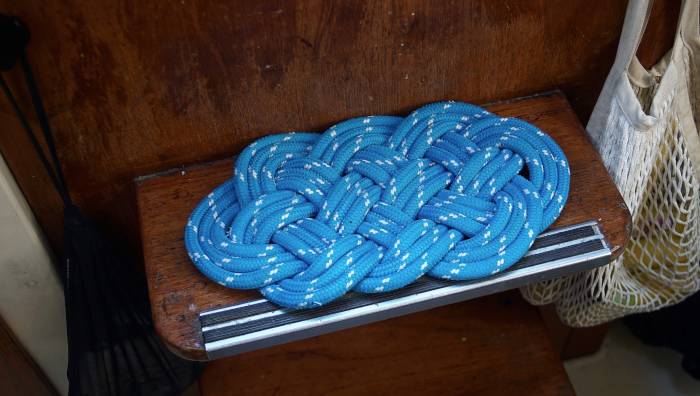
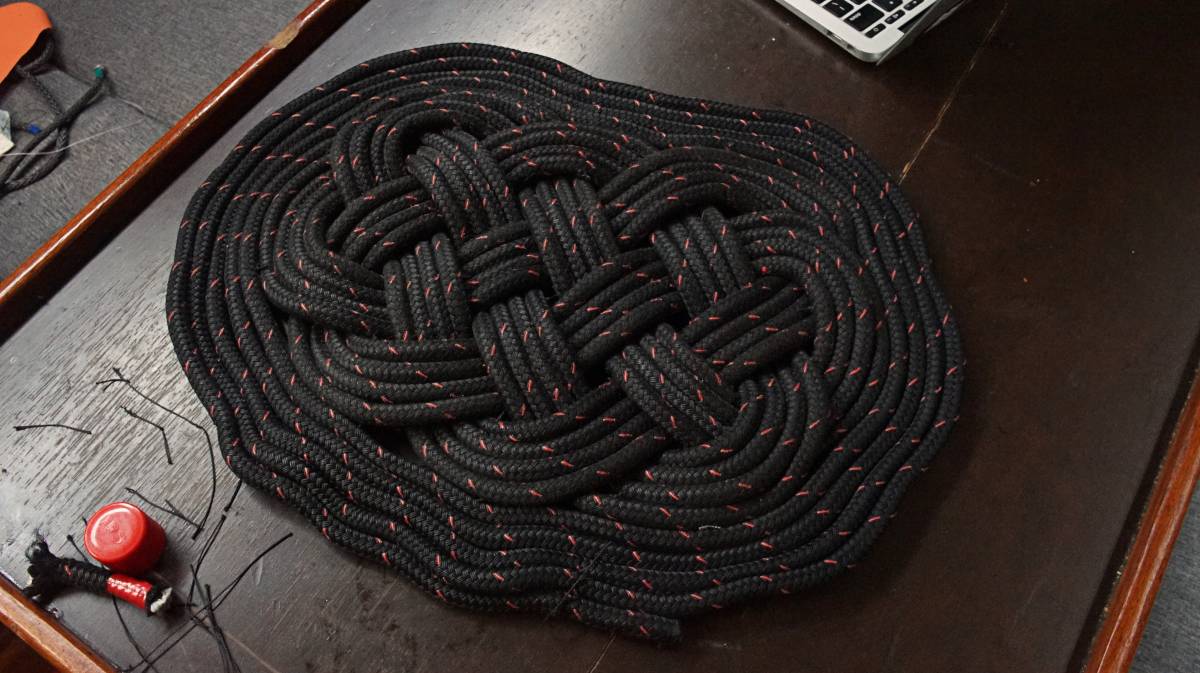
Other mats
Using a similar technique, I've also made smaller mats. The technique is similar:
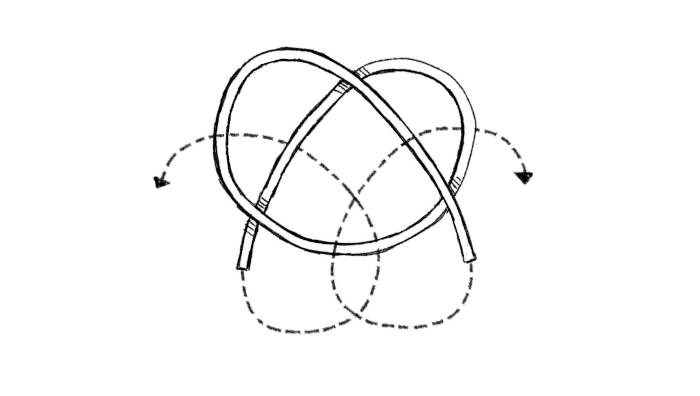
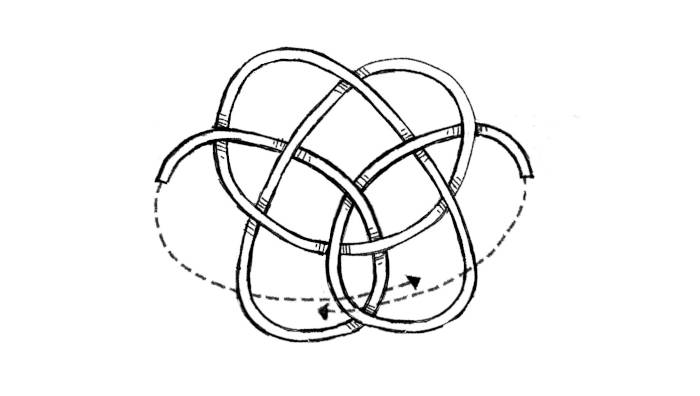

The last image is the basic pattern for the mat, then you have to feed the line through, following the pattern. When you run out of line, then it is time to tighten the mat. This is done by taking any line and taking up the slack. Taking the slack out of the pattern will likely result in more loose line that you'll have to feed through the pattern again.
When you are done taking the slack out, the mat will be nice and tight.
How many passes you will have to make depends on the length of the line. If you want to stop at 3 passes but have left over rope, cut the rest the line off. I like to end my mats with the two ends on the bottom, I then stitch the two ends together so they don't fall out(can happen if the tails are short).
A tiny red paracord mat with two passes:

A black paracord mat with 4 passes:
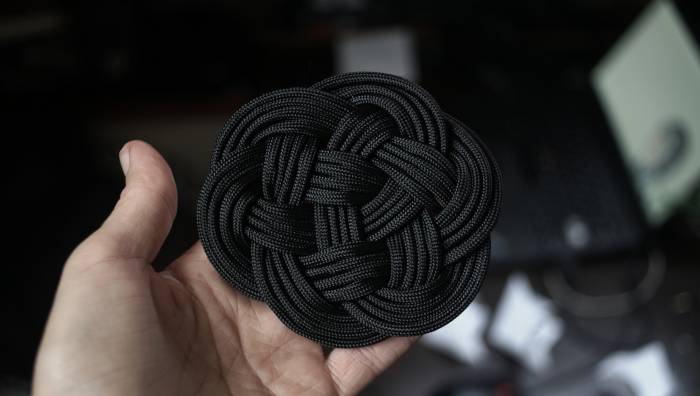
 About
About Projects
Projects Books
Books Games
Games Stories
Stories Store
Store Notes
Notes How-to
How-to